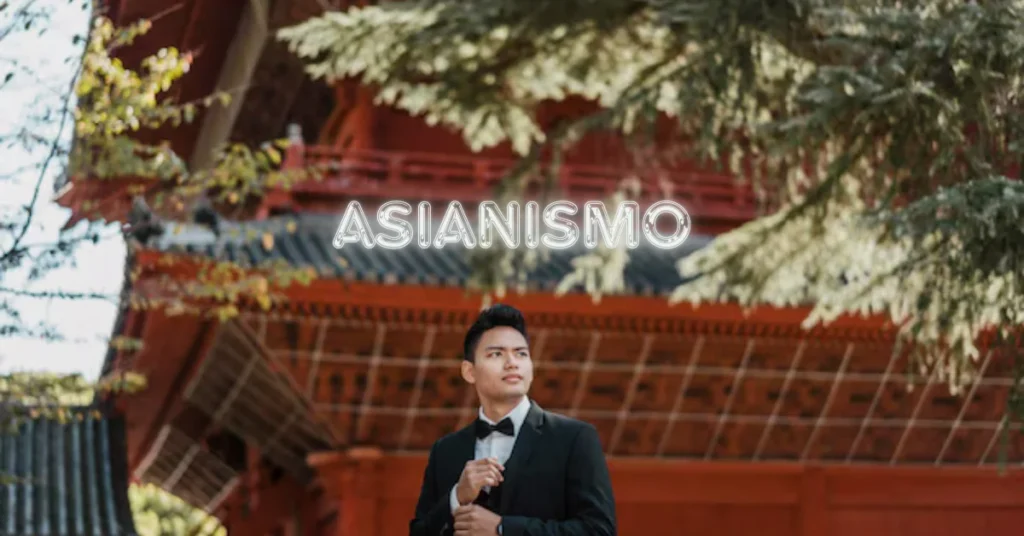Introduction to Asianismo
Asia is a kaleidoscope of cultures, colors, and celebrations. Each nation boasts its unique traditions and festivals that reflect the rich tapestry of history and identity. Yet, amidst this diversity lies a powerful concept: Asianismo. This movement seeks to unite Asia’s varied festivities under one umbrella, highlighting shared values while respecting individual heritage.
Imagine vibrant parades filled with traditional music echoing through bustling streets in every corner of the continent. Picture families gathering for feasts that showcase their culinary delights passed down through generations. From Diwali lights in India to cherry blossoms in Japan, there’s an undeniable magic when these diverse traditions come together.
As we delve deeper into Asianismo, we’ll explore how uniting these festivals can foster understanding and appreciation among nations. Join us on this journey to uncover the beauty of Asia’s collective spirit!
History and Background of Asian Festivals and Traditions
Asian festivals and traditions have deep roots that stretch back thousands of years. Each culture has its own story, shaped by geography, religion, and history.
From the colorful lanterns of Diwali in India to the solemnity of Obon in Japan, every celebration reflects a unique heritage. These events often mark agricultural cycles or significant historical moments.
Religious beliefs play a crucial role as well. Many festivals honor deities or commemorate spiritual teachings. They serve as both a reminder of faith and an opportunity for communal bonding.
Traditions are passed down through generations, evolving yet retaining their essence. This rich tapestry showcases not only joy but also resilience amid challenges faced by communities over time.
The diversity within Asia is staggering yet unifying at its core—these celebrations bring people together across vast landscapes and cultural divides.
The Benefits of Uniting Asia’s Diverse Cultures and Celebrations
Uniting Asia’s diverse cultures and celebrations fosters a sense of belonging. It allows people to connect beyond geographical borders. Shared experiences create bonds that transcend individual differences.
Cultural exchange enriches societies. When various traditions come together, they ignite creativity and innovation. This fusion often leads to new art forms, culinary delights, and unique performances.
Economic growth also thrives in unity. Collaborative festivals attract tourism, boosting local businesses. Communities benefit from increased visibility on the global stage.
Moreover, embracing diversity promotes peace and understanding among nations. Celebrating each other’s customs cultivates respect and appreciation for varied histories.
Unity in celebration strengthens identity while allowing room for personal expression within broader cultural narratives. It’s a beautiful dance of harmony woven through vibrant colors and sounds across the continent.
Popular Asian Festivals and Their Cultural Significance
Asia is home to a myriad of vibrant festivals, each rich with cultural significance. Diwali, celebrated by millions in India and around the world, symbolizes the triumph of light over darkness.
Chinese New Year bursts forth with dragon dances and fireworks. It marks new beginnings and is steeped in traditions that honor ancestors while welcoming prosperity for the year ahead.
In Japan, Hanami invites people to appreciate cherry blossoms. This breathtaking spectacle fosters community spirit as families gather under blooming trees to enjoy picnics and reflect on nature’s beauty.
Ramadan culminates in Eid al-Fitr across Muslim-majority countries, emphasizing charity and togetherness through feasting after a month of fasting.
These festivals not only showcase Asia’s diversity but also highlight shared values such as family bonding, gratitude, and hope for future blessings. Each celebration brings unique stories that connect people beyond borders.
Challenges and Obstacles to Achieving Unity in Asia
Asia’s vastness presents unique challenges to unity. Each nation boasts its own distinct history, language, and customs. These differences can lead to misunderstandings and cultural clashes.
Political tensions further complicate matters. Disputes over territory or ideology often create divisions among countries that share a rich tapestry of traditions. Such issues make collaborative efforts difficult.
Economic disparities also play a role. Wealthier nations may overlook the needs of their less affluent neighbors. This imbalance fosters resentment instead of solidarity.
Additionally, social media can both connect and divide people. While it allows for sharing diverse cultures, it can amplify negative stereotypes or misinformation about different communities.
Despite these obstacles, many still believe in the power of festivals and shared experiences to bridge gaps between cultures throughout Asia. Understanding these challenges is essential for moving forward together on this journey toward harmony.
Efforts Towards a United Asia through Festivals and Traditions
Across Asia, numerous initiatives aim to bridge cultural divides through festivals and traditions. Governments and organizations are increasingly recognizing the unifying power of shared celebrations.
Collaborative events often showcase unique customs from different regions. This creates opportunities for dialogue and understanding among diverse communities. For example, regional fairs featuring food, music, and dance promote cross-cultural appreciation.
Technology plays a vital role in these efforts. Virtual platforms allow people from various backgrounds to share their festivities with a global audience. Social media campaigns highlight traditional practices that might otherwise go unnoticed.
Education is another cornerstone of fostering unity. Schools across Asia are incorporating multicultural education into their curricula, emphasizing respect for diverse perspectives.
Grassroots movements also contribute significantly to this cause. Local groups frequently organize joint celebrations that bring together distinct cultures within neighborhoods. These activities build friendships while celebrating differences as strengths rather than barriers.
Embracing Diversity, Celebrating Unity in Asia through Asianismo
Asianismo serves as a vibrant tapestry woven from the rich threads of diverse cultures across Asia. Each festival tells its own unique story, yet they share common values—family, gratitude, and respect for nature.
By embracing these differences, Asianismo encourages a deeper understanding among nations. It fosters connections that transcend borders and languages.
Celebrating unity in diversity enhances mutual appreciation. When people come together to celebrate various traditions, they create shared experiences that build lasting bonds.
This cultural exchange nurtures empathy and promotes peace. The spirit of Asianismo invites everyone to partake in festivities beyond their own heritage while honoring the uniqueness of each tradition.
As we engage with one another’s celebrations, we cultivate an inclusive atmosphere where every voice is valued. This celebration becomes not just about individual festivals but about a collective identity grounded in respect and harmony across all of Asia’s beautiful landscapes.
Uniting Asia’s Diverse Festivals and Traditions
Asianismo seeks to create a vibrant tapestry that brings together the rich diversity of Asian festivals and traditions. Each celebration holds its own story, rooted in history and culture. From Diwali in India to Lunar New Year across East Asia, these events shine with unique customs and practices.
By embracing this variety, we can foster mutual respect among different communities. It allows for shared experiences that transcend geographical boundaries. When people come together to celebrate their differences, they discover common ground.
Events like the Asian Cultural Festival serve as platforms for showcasing traditional music, dance, and art from various countries. Attendees experience a blend of sights and sounds that enrich their understanding of one another’s heritage.
These interactions cultivate friendships while dismantling stereotypes. Through unity in diversity, Asianismo transforms individual celebrations into collective joy—an opportunity to appreciate what makes each culture special while celebrating our interconnectedness.
Conclusion
Asianismo represents a beautiful tapestry of diverse cultures, traditions, and celebrations that span the vast continent of Asia. By uniting these rich festivals, we foster understanding and appreciation for one another’s heritage.
The history behind Asian festivals is as vibrant as the celebrations themselves. Each festival carries stories filled with joy, sorrow, resilience, and hope. They are not just events; they are reflections of our identities.
Embracing this unity offers numerous benefits. It encourages collaboration among nations while promoting tourism and cultural exchange. The blending of traditions can lead to innovative experiences that honor age-old customs while appealing to modern sensibilities.
Many popular Asian festivals stand out due to their unique significance—Diwali in India symbolizes light over darkness; Lunar New Year brings families together across generations; Eid al-Fitr marks the end of Ramadan with communal feasting and prayers.
However, achieving true unity poses challenges. Historical tensions between nations often surface during collaborative efforts in celebrating shared traditions. Language barriers also create divides that need addressing in fostering better communication.
Despite these obstacles, positive strides are being made towards a united Asia through various initiatives focused on inter-cultural dialogue via festivals and educational programs aimed at celebrating diversity.
Asianismo embodies an ethos where diversity is not only respected but also celebrated collectively across borders within Asia—a harmonious movement towards greater understanding amongst all peoples on this rich continent. This spirit serves as a reminder that despite our differences, we share common threads woven into the fabric of our lives through festivity and tradition.
FAQs
What is “Asianismo”?
Asianismo is a movement that seeks to unite Asia’s diverse festivals and traditions under a common banner, celebrating shared values while respecting individual cultural heritage.
How does Asianismo promote unity among Asian cultures?
Asianismo promotes unity by showcasing and integrating diverse traditions, fostering cultural exchange, and creating shared experiences that bridge geographical and cultural divides.
What are some examples of festivals celebrated under Asianismo?
Festivals such as Diwali from India, Chinese New Year, and Hanami in Japan are celebrated under Asianismo, each representing unique cultural practices while highlighting common values like family and gratitude.
What challenges does face in achieving cultural unity?
Asianismo faces challenges such as political tensions, economic disparities, and language barriers, which can create misunderstandings and hinder collaborative efforts.
How does Asianismo benefit local economies?
By attracting tourism and fostering local businesses through collaborative festivals and cultural exchanges, Asianismo boosts economic growth and enhances visibility for regional crafts and traditions.







